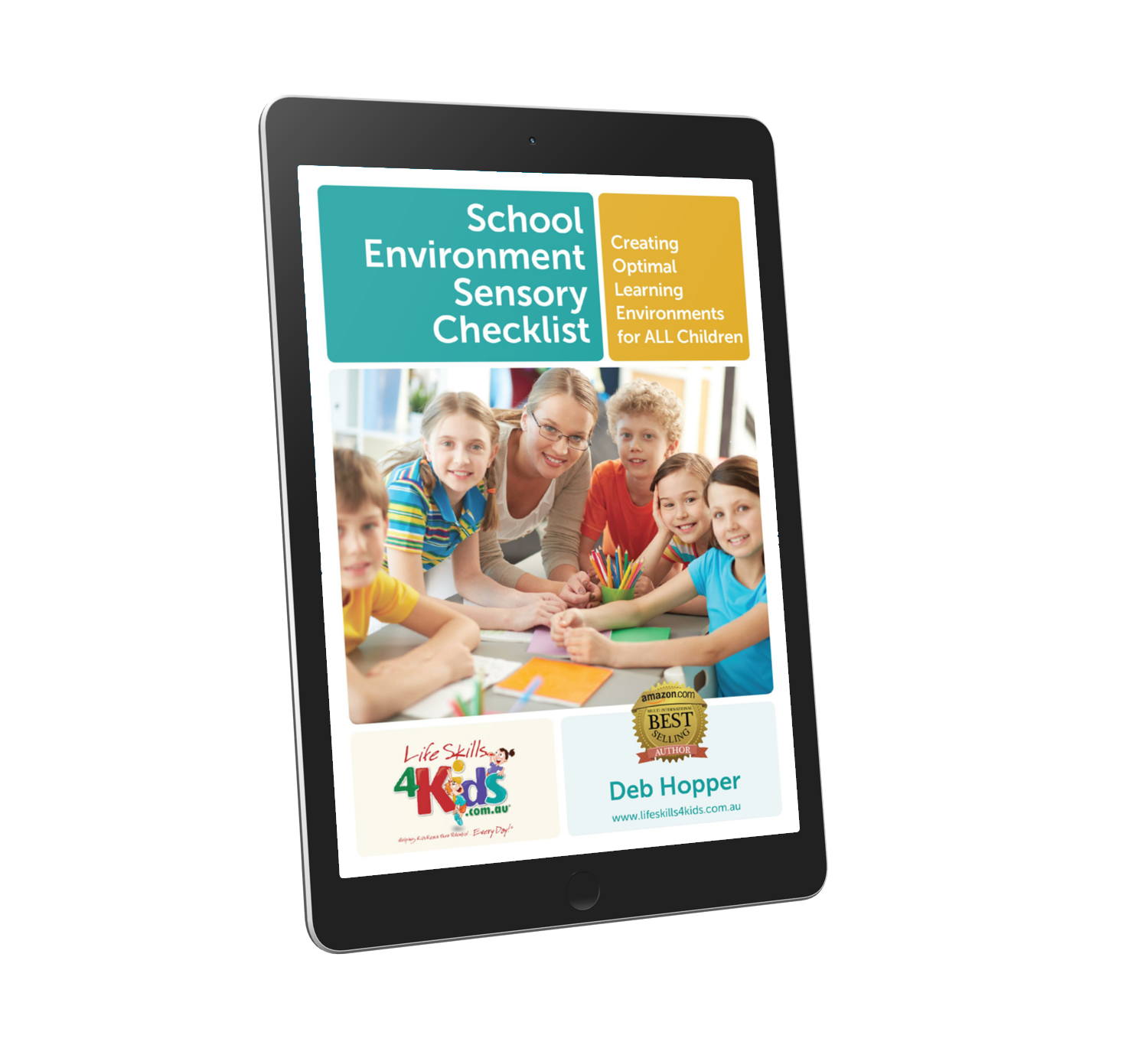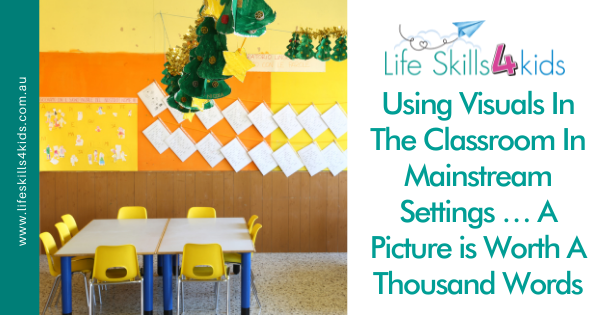Using Visuals In The Classroom In Mainstream Settings … A Picture Is Worth A Thousand Words
As professionals, we all know that within our classroom there will be students with a very wide range of different abilities.
Each one of the young people in our classroom is unique. It is up to us to find strategies and tools to help every one of them learn as effectively as possible.
The saying goes that a picture is worth a thousand words and for some of the kids in our classroom, that will be very true.
Learning Styles
A common and widely-used model of learning style is Fleming’s (2001) Visual Auditory Kinesthetic (VAK) model. According to the VAK model, most people possess a dominant learning style; however some people have a mixed and some have a balanced blend of the three styles:
- Visual learners
- Auditory learners
- Kinaesthetic learners
Fleming claimed that visual learners will have greater success if their environment includes using visuals to assist their learning processes.
There has been conflicting evidence and suggestions about the VAK Model and learning styles. The idea remains though that if we can cater for all three learning styles in our classroom, then we have a greater chance of providing the education that each of our young people deserve.
This article focusses on using visuals in the mainstream classroom to facilitate learning. You may also be interested in our article on using visuals for kids with autism.
How Can Teachers Use Visuals in The Mainstream Classroom?
#1. Daily Routine
Using visuals in the classroom can start with the daily routine.
All kids like structure and the most effective way to enable learning is to have a visual, supported by words and sounds. A daily routine can be as simple as a class timetable on the wall or as complex as individualised timetables for each child.
By using visuals in the classroom, you are equipping your students with life skills which will provide them with organisational and time management tools.
There are a variety of visuals that you can use – it could be photos, simple line drawings or colour-coded images. You will find that each student will respond differently to certain visuals.
Remember that some kids cannot cope with anything too complicated, they need a basic black & white cue to help them make sense of their world. Others will thrive on intricate cues which they may have helped design for the classroom.
#2. Phonics & Learning Tools
Using visuals in the classroom to enable children to learn more effectively is nothing new. This does not make it any less important though.
As professionals, we want to use any strategies we can to help kids learn to read.
Phonics can be a great “way in” to provide a foundation for learning.
It is important to teach Phonics in a structured way. For more information, check out Phonics Australia.
We mentioned different learning styles earlier and predominantly visual learners prefer to ‘see’ what they are studying. So in a phonics context, flash cards, written notes, charts and diagrams will work best for them to learn something new.
Colourful Semantics was developed by Alison Bryan and is aimed at teaching kids to develop their grammar. It works by cutting sentences into their thematic roles then colour codes them.
The approach has 4 key colour coded stages.
- WHO – Orange
- WHAT DOING – Yellow
- WHAT – Green
- WHERE – Blue
For more information, have a look here.
Picture Exchange Communication System (PECS) can be a very useful visual tool to help children learn functional communication. It was developed in 1985 and it is used worldwide with kids who have various cognitive, physical and communication challenges.
PECS is based on psychologist Skinner‘s work around verbal behaviour and applied behaviour analysis. Specific prompts and reinforcements are used and the first stage is to give a picture in exchange for an item. It is important, when using PECS that the adults have been adequately trained to ensure the highest level of success for the student.
For more information, check out PECS Australia.
#3. Promoting “good behaviour”
Using visuals in the classroom to help with behaviour management is an ideal way to engage all of your class.
You can add good work charts to your wall and use these to let the kids know how near (or far!) they are to being allowed to have golden time (when they get to choose what they want to do) on a Friday afternoon.
Visuals can be great to help kids to learn to manage their feelings. The Just Right Kids Technique has been developed to encourage kids to learn about and self-manage their feelings so that they are “just right” for being able to access an activity.
As professionals, the Just Right Kids Technique, will help you to understand why some of the kids in your class may be struggling with concentration and being able to focus on the demands you are placing on them. The technique then provides practical visual help for you and your students to be able to work out when they are Just Right Kids.
#4. Providing a multi-sensory approach to learning
With a class of 30 children, there will be some kids who have sensory needs and it is important to help them learn too. Our Sensory Checklist can help you to best accommodate their needs. Another useful article to have a look at would be our Sensory Issues that Impact Learning.
Using visuals in the classroom to aid a multi-sensory approach can help all of your students achieve their fullest potential.
Remember that with the ever increasing resources that are available on the internet, you do not have to do all of the hard work of making your own visuals. When you find good resource bases for visuals, you can often subscribe as a school to access them. This also helps provide a whole school approach to using visuals in the classroom, which can then be disseminated to supporting kids at home too.
School Environment Sensory Checklist (eBook)
Do you have children in your class who struggle with autism, learning difficulties or reduced concentration? Then the School Environment Sensory Checklist (SESC) is your entry into transforming your classroom!
Quickly and easily evaluate your classroom from a sensory perspective to enhance learning needs of all children, including children with autism and learning difficulties.
Have less distracted children who listen for longer and enjoy times of focused learning and easier transitions. Whether you are a newly qualified teacher or have many years experience, the School Environment Sensory Checklist (SESC) will refresh your vision for your classroom!


